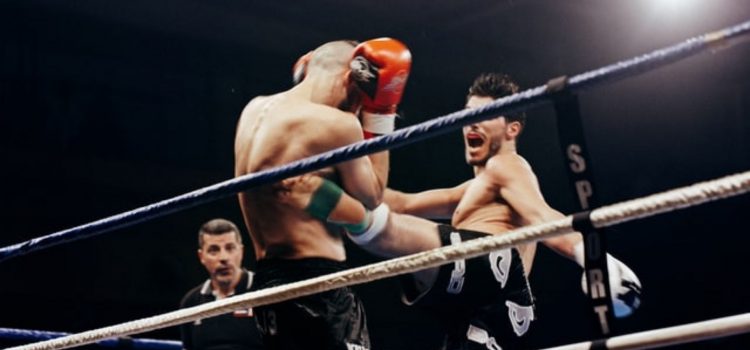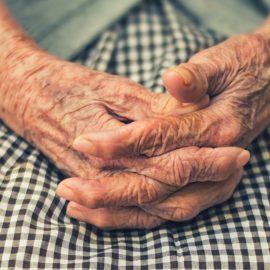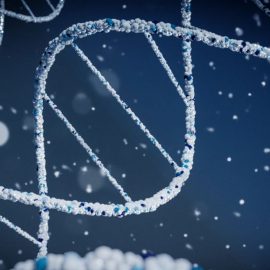

This article is an excerpt from the Shortform book guide to "The Sports Gene" by David Epstein. Shortform has the world's best summaries and analyses of books you should be reading.
Like this article? Sign up for a free trial here .
Why are athletes less sensitive to pain? Does playing sports decrease pain sensitivity? Or is it a matter of genetics?
Pain is inevitable in most sports, and managing pain is an important part of being an elite athlete. While some athletes may have a genetic advantage when processing pain, intense athletic competition can make anyone less sensitive to pain.
Keep reading to learn about the genetics of pain and why athletes tend to be tougher than an average person when it comes to handling pain.
Genes and Pain
Our genes influence our experience of pain. Having a version of a gene that makes us better able to manage pain could give some athletes an advantage on the field and during training. Research from a professor of psychology showed that collegiate student-athletes were less sensitive to pain than their peers.
The research on the genetics of pain has identified a few genes that have been implicated in our response to pain:
- The SCN9A gene influences people’s perception of pain. One mutation of this gene causes people to experience no pain at all. While this might seem like an advantage in sports at first, people with this mutation do not usually live very long. They are unable to process important feedback from their bodies (such as having an infection or responding to signals from our nerves to change positions or move away from a source of discomfort and so on), which causes them to die young. Another mutation in the same gene causes people to be hypersensitive to pain. More common versions of this gene cause most people to fall in the middle of these two extremes. That multiple versions of this gene exist in the population illustrates how people really do experience pain differently.
- A mutation in the MC1R gene, which gives many redheads their hair color, also seems to make redheads better able to tolerate some forms of pain than others.
- The COMPT gene has been called the “worrier/warrior gene.”
- There are two versions of this gene, called Val and Met. Sixteen percent of people in the US have two Met versions of the gene. Forty-eight percent of people have one of each and 36% of people have two Val versions.
- The “worriers”: People with the Met version tend to be more sensitive to pain and to be more anxious. Studies have also found that they are able to perform cognitive and memory tasks with less mental effort.
- The “warriors”: People with the Val version generally do worse on tests of mental flexibility but are more tolerant of pain.
- Epstein cites the chief of a neurogenetics lab at the National Institute of Health, who suggests many professional football players likely have the “warrior” versions since they experience pain and discomfort daily.
Epstein notes that sports can activate our fight or flight response. Under stressful or dangerous conditions, our brains are able to block out pain signals so that we can run or fight. This explains how athletes can sometimes play through injuries or may not even notice injuries sustained during play until later.
| Can Pain Tolerance be Learned? Many athletes may be tougher than the average person when it comes to physical discomfort because of their genes. But it would also make sense for pain tolerance to be something that can be learned through practice, much like other sports-related skills. A Scandinavian Journal of Pain study asks whether athletes who play contact sports are more tolerant of pain at the outset of their sports season or whether their tolerance is acquired through play. Just over 100 athletes from rugby, American football, and martial arts were tested for their pain tolerance and coping strategies at the start, middle, and end of their seasons. The study found that athletes who participated through the entire season had higher pain tolerances through the season (including before it began) than “non-participating athletes.” Additionally, athletes who participated through the entire season became more tolerant of some types of pain. The authors hypothesize that athletes who “stick with” contact sports may better manage pain because they are less emotionally bothered by it than other people. While they realize that part of the sports experience is painful, they “catastrophized less” when they were injured or in pain. Thus, the authors suggest that participating in sports can help build pain tolerance and pain management skills. |

———End of Preview———
Like what you just read? Read the rest of the world's best book summary and analysis of David Epstein's "The Sports Gene" at Shortform .
Here's what you'll find in our full The Sports Gene summary :
- A look at how our genes play a determining role in our success in sports
- Why practice doesn't always guarantee success
- The fortuitous gene pairings that can lead to elite athleticism






